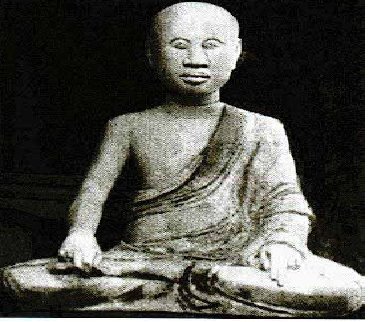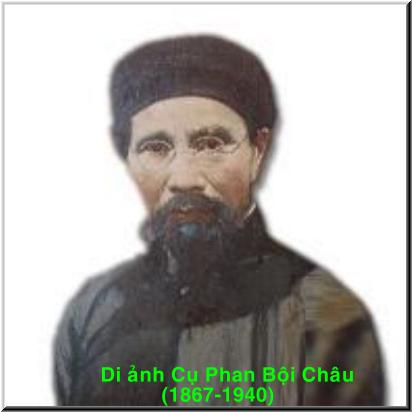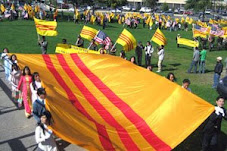Tưởng niệm Quốc Hận:
20-7-1954!
Hàn Giang Trần Lệ Tuyền
“Đây phương Nam, đây ruộng Cà Mâu no lành, với tiếng hát êm đềm trong suốt đêm thanh…”. Dẫu cung đàn đã xưa, lời nhạc đã cũ; nhưng sẽ không bao giờ trở thành xưa cũ, khi chúng ta, những người dân của nước Việt Nam Cộng Hòa đã một thời được sống trong cảnh thanh bình, tự do, no ấm; vì thế, hôm nay, chúng ta, dù mái tóc đã phai mầu, nhưng mỗi lần lướt đôi tay trên chiếc dương cầm, hay trên những cây đàn tuyệt hảo của đầu thế kỷ 21, thì có lẽ trong chúng ta, dễ mấy ai quên đi những chiếc phím ngà xưa cũ của những cây đàn Mandoline của thế kỷ trước, với bài hát Trăng Phương Nam, để rồi có thể có nhiều người sẽ rưng rưng, khi vọng tưởng về những năm tháng thanh bình xưa đã mất, và không bao giờ tìm thấy lại, dù một lần nào nữa!

Hôm nay, ngày 20 tháng 7 năm 2012; để tưởng nhớ đến một ngày đất nước đã bị chia cắt, phân ly! Người viết muốn nhắc lại một bài đã viết trước đây: Kể từ khi nước Việt Nam Cộng Hòa rơi vào tay cộng sản, thì người Việt tỵ nạn chúng ta chỉ còn biết và tưởng niệm ngày 30/4/1975, là ngày Quốc Hận. Nhưng ngược thời gian trở về cuối thập niên 1950, và đầu thập niên 1960. Khi Tổng Thống Ngô Đình Diệm, Người đã khai sinh ra Thể chế Cộng Hòa Việt Nam, thì người dân miền Nam đã từng tưởng niệm Ngày Quốc Hận là ngày 20/7/1954. Ngày ấy, theo hiệp định Genève, đất nước đã bị Cộng sản Bắc Việt và Pháp chia cắt thành hai miền bởi giòng sông Bến Hải. Miền Bắc do Hồ Chí Minh cai trị, với những cuộc “cách mạng” máu đổ đầu rơi, con tố cha mẹ, vợ tố chồng. Rồi “cách mạng văn hóa” làm cho không biết bao nhiêu người đã phải chết thảm, hoặc bị tù đày, tàn hại đến cả một đời người, mà đến cả sóng nước của giòng sông Bến Hải cũng phải khóc hờn ai oán:
“Con sông Bến Hải từ độ chia hai,
Đêm đêm nó khóc than hoài
Hờn căm cộng sản chia hai nhịp cầu
Lớn lên từng đợt u sầu
Bao giờ Nam-Bắc nhịp cầu sang ngang
Bên đây đời sống thênh thang
Bên kia kiếp sống điêu tàn xác xơ
Ruộng đồng lúa mọc lơ thơ
Máu pha nước mắt ngập bờ tre xanh!”
Trong khi đó, tại miền Nam, dưới sự lãnh đạo của Tổng Thống Ngô Đình Diệm đầy lòng nhân ái, Người đã sống một cuộc đời thanh bần, liêm khiết, quên mình, để tận hiến cho Quốc Gia và Dân tộc. Như mọi người đã biết, vào thời kỳ ấy, Nền Cộng Hòa Việt Nam còn non trẻ, lại còn thêm loạn sứ quân cát cứ, và không được đồng minh và quốc tế viện trợ như Việt Nam Cộng sản hiện nay. Nhưng Tổng Thống Ngô Đình Diệm đã xây dựng được một nước Việt Nam Cộng Hòa tự do, phồn thịnh. Từ thành thị cho đến thôn quê, nơi đâu cũng được sống trong cảnh thanh bình, no ấm.
“Tiên thiên hạ vi ưu, vi ưu - Hậu thiên hạ vi lạc, vi lạc”; đó là, cách Sống của cố Tổng Thống Ngô Đình Diệm. Bởi vậy, cho nên chính vì xót đau cho những cảnh đời lầm than, đau khổ của đồng bào đang ở bên kia Vĩ tuyến, nên Tổng Thống Ngô Đình Diệm và là vị Tổng Tư Lệnh đầu tiên của Quân đội Việt Nam Cộng Hòa đã có chủ trương Bắc Tiến. Nhưng tiếc rằng, con đường Bắc Tiến chỉ mới ở bước đầu, thì vị Tổng Thống đã có công nghiệp khai sáng Nền Cộng Hòa Việt Nam đã đi vào lịch sử.
Những điều ấy, đã được Thi sĩ Vũ Hoàng Chương viết thành những vần thơ, vì cứ ngỡ rằng “Từ nay trăm họ câu an lạc-Đàn khúc đầm Dao, rượu chén Quỳnh”, và với ước mơ Bắc tiến, để có một ngày “trở lại Cố đô- Đại định Thăng Long, một bóng Cờ”. Người viết xin chép lại những vần thơ của Thi sĩ Vũ Hoàng Chương, để mọi người cùng “chiêm nghiệm” như sau đây:
“Lò phiếu trưng cầu, một hiển linh
Đốt lò hương, gửi mộng bình sinh
Từ nay trăm họ câu an lạc
Đàn khúc đầm Dao, rượu chén Quỳnh!
Có một ngày ta trở lại cố đô
Lưỡi lê no máu rửa Tây Hồ
Trên tầng Chí Sĩ bàn tay vẫy
Đại định thăng Long, một bóng cờ”.
Nhưng không riêng Thi sĩ Vũ Hoàng Chương, mà Nhạc sĩ Lam Phương cũng đã viết thành một ca khúc Chuyến đò Vĩ tuyến, và đã đi vào Nhạc sử:
“Đêm nay trăng sáng quá anh ơi
Sao ta lìa cách bởi dòng sông bạc hai màu
Lênh đênh trên sóng nước mông mênh
Bao đêm lạnh lẽo em chờ mong gặp bóng chàng
Vượt rừng vượt núi đến đầu làng
Đò em trong đêm thâu sẽ đưa chàng sang vĩ tuyến
Phương Nam ta sống trong thanh bình
Tình ngát hương nồng thắm
bên lúa vàng ngào ngạt dâng
Ơ... ai... hò ...
Giòng sông mơ màng và đẹp lắm
Anh ơi ai nỡ chia đôi bờ
để tình ta ngày tháng phải mong chờ
Hò... hớ .... hò .... hơ ...
Em và cùng anh xây một nhịp cầu
Để mai đây quân Nam về Thăng Long
Đem thanh bình sưởi ấm muôn lòng !
Sương khuya rơi thấm ướt đôi mi
Tim em lạnh lẽo như chiều đông ngoài biên thùy
Ai gieo chi khúc hát lâm ly
Như khơi niềm nhớ cuộc từ ly lòng não nùng
Bùi ngùi nhìn cách xa ngàn trùng
Giờ đây em điêu linh nơi quê nhà đang chìm đắm
Bao đêm thổn thức dưới trăng ngà
Hồn đắm say chờ đón ngày anh về sưởi lòng nhau”.
Nhưng than ôi! Những hoài bão, những ước mơ, mà chắc của rất nhiều người; đặc biệt nhất, là những đồng bào của Miền Bắc đã đành phải nuốt nước mắt khi quyết định phải vào miền Nam để tỵ nạn Cộng sản. Và chỉ có chính họ, mới thấu được những nỗi đau thương khi phải rời bỏ nhà cửa, ruộng vườn, có nhiều gia đình đã phải lạc mất người thân, khiến cho gia đình của họ đành phải đôi bờ bên giòng sông Bến Hải và cầu Hiền Lương, với ước mơ: “Bao giờ Nam-Bắc nhịp cầu sang ngang”, và “anh cùng em xây một nhịp cầu, Để mai đây quân Nam về Thăng Long, Đem thanh bình về sưởi ấm muôn lòng”.
Những nỗi đau thương của đồng bào miền Bắc, vào thời điểm sau ngày 20/7/1954 ấy, tại miền Nam ít ai hiểu thấu; nhưng cho đến sau ngày 30/4/1975, thì những người Việt Nam tỵ nạn Cộng sản thực sự, và khi bước xuống những con thuyền mong manh để vượt biển, hoặc chạy trốn khỏi đất nước trên những con đường rừng; chỉ đến lúc đó, khi ngoái nhìn về nơi cố quốc, thì họ mới thấy lòng quặn thắt, mới thấu được những nỗi đau của đồng bào miền Bắc ngày xưa, khi không còn con đường nào để chọn bằng con đường phải ra đi!
Ôi! Những dòng nước mắt nào đã rơi rơi trên suốt con đường từ Bắc vào Nam, và những dòng nước mắt nào đã rơi xuống những bãi biển, rơi trên những con thuyền đã đưa người ra khơi, để đi tìm sự sống trong cái chết, và đã có biết bao nhiêu người đã phải bị vùi chôn dưới đáy nước, hay đã vĩnh viễn bỏ mình ở các trại tỵ nạn xa xôi!
Làm sao nói hết được nỗi đau; bởi vì tất cả những ngôn từ của nhân loại không làm sao diễn đạt cho vừa với những vết thương, những nỗi đau đớn quá kinh hoàng, và những mất mát, mà không có bất cứ một thứ vật chất nào có thể bù đắp, mà mãi mãi sẽ không bao giờ quên được, và trong số người ấy, đã có rất nhiều người là đồng bào miền Bắc đã từng đứt ruột rời bỏ tất cả, để vào Nam tỵ nạn Cộng sản, những tưởng rằng đã chạy thoát; đâu có ngờ rằng, mình sẽ phải chạy giặc tới hai lần, và trong số ấy, cũng có nhiều người đã vĩnh viễn không bao giờ còn nhìn thấy lại chốn cũ, làng xưa!
Giờ đây, kể từ ngày Quốc Hận: 20/7/1954; 58 năm dài đã trôi qua, với bao nhiêu những biến cố tang thương, dâu bể, dù là người miền Bắc hay người miền Nam, và dù một lần, hay hai lần bỏ xứ ra đi, sống đời tỵ nạn trên những đất nước tạm dung, hoặc ngay cả những đồng bào tại quốc nội; nhưng hôm nay, với hệ thống thông tin toàn cầu, với những hình ảnh, và những thước phim tài liệu hoàn toàn trung thực, thì có lẽ đa số đồng bào đã biết được cuộc sống tương đối tự do, no ấm, thanh bình của đồng bào tại miền Nam dưới thời Đệ Nhất Việt Nam Cộng Hòa: 1954-1963; thì chắc chắn sẽ thấy được công nghiệp của Người đã khai sáng Thể chế Cộng Hòa Việt Nam, và rồi sẽ bồi hồi thương tiếc cho tất cả những gì đáng phải trân-quý, đáng phải gìn giữ; nhưng bây giờ đã mất, để rồi mãi mãi chỉ còn biết tìm lại qua dư âm của những lời ca, tiếng nhạc và những vần thơ năm cũ:
Đẹp thay Chính Thể Cộng Hòa,
Vui thay tiếng hát câu ca thanh bình.
Cộng Hòa như ánh Bình Minh,
Như giòng nước mát như tình lúa xanh.
Pháp quốc, 20/7/2012
Hàn Giang Trần Lệ Tuyền

















































